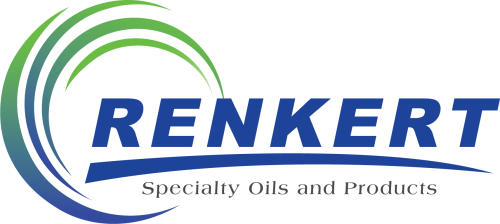Tariff news has been moving fast, and it can be tough to keep score. Since our last post about tariffs in early April, Washington has continued to challenge suppliers of white oils, process oils, and base oils to tackle their buyers’ questions.
- “What does this mean for us?”
- “What happens next?”
- “How will this affect our bottom line?”
In this post, we break down where the rules stand today, what increased duties would do to landed cost, and four easy steps to cut risk.
Read on to learn how your specialty oil and white oil supplier can help provide stability in a time of uncertainty and help keep your costs under control.
Where Tariffs Stand Today
Tariff rules seem to change with every headline. Here’s a brief history of the last couple of months:
A Blanket 10% Duty on Every Import
A White House order issued April 2 set a “baseline” 10 percent tariff on all goods coming into the United States, effective April 5.
Higher, country-specific rates may be coming, following a 90-day pause on new tariffs for all countries except China announced April 10. These planned increases of 11 to 50 percent are suspended until July 9.
Canada and Mexico: Still 10% for Non-USMCA Energy—So Far
Most Canadian and Mexican importers now pay 25 percent for products that do not comply with the United States-Mexico-Canada Agreement (USMCA). However, energy materials—white mineral oil included—stay at 10 percent.
This is true for the moment. The March 6 notice of the Executive Order authorizing the new tariffs on Canada makes it clear that the carve-out for energy materials can be revised or revoked at any time by President Trump.
USMCA-Compliant Imports Tariff-Free
Goods from Canada and Mexico that are compliant with the USMCA, including oil and natural gas, may be imported into the U.S. tariff-free.
“We welcome President Trump’s decision to exclude oil and natural gas from new tariffs, underscoring the complexity of global energy markets.” — Mike Sommers, President & CEO, American Petroleum Institute, April 2, 2025
How Higher Duties Could Hit Your Bottom Line
Tariffs might seem like just numbers on paper, but when it comes to specialty white mineral oils, even small changes can ripple through your costs and supply chain.
Here’s a snapshot of what you need to know right now:
- Current 10% tariff: This baseline adds a noticeable bump to your costs for specialty oils if you’re working with a supplier that mostly imports white mineral oils and other refined oil products.
- Potential 25% tariff: If the carve-out for Canadian energy products ends, duties on white mineral oil imports could more than double for suppliers importing from Canada.
- Customs and paperwork: New tariff rules mean more documentation and compliance checks. Early reports show this can add days to border processing times, so ask your suppliers about potential delays that could affect your production schedule.
- Supply chain complexity: Additional tariffs and paperwork can cause ripple effects, like higher brokerage fees and shipping slowdowns. Ask your suppliers about what hidden costs this may add beyond the duty itself.
Though the extent to which tariffs might increase prices on everyday products is unclear, specialty oils like white mineral oil are likely to be sensitive to marketplace disruptions. Every cent counts when you’re managing tight margins and strict quality specifications.
Four Ways to Stay Ahead of the Tariffs
A higher duty may be out of your hands, but smart supply-chain moves are not. Take these steps now, and you’ll sleep better.
- Reserve Q3–Q4 volume today. Locking in orders while the 10 percent rate still applies shields you from a sudden jump to 25 percent and gives carriers time to stage equipment before peak-summer congestion.
- Explore U.S.-refined options or alternate-origin blends. White oils made from raw materials from Gulf-Coast or Midwestern refineries, or imported from tariff-neutral countries, remain duty-free—removing a cost layer and trimming paperwork. If working with a new supplier, request a lab check to confirm that key metrics such as purity and viscosity match your specs.
- Add tariff-adjuster clauses to contracts. A short paragraph that pegs price to the posted duty rate saves both sides from emergency renegotiations and keeps invoices transparent if Washington tweaks rates mid-term.
- Keep six weeks of stock on site or stored at your supplier’s facility. Customs exams and new HTS coding can add up to a week at the border; local inventory lets your line run while brokers untangle paperwork—and gives you leverage to time re-buys when rates are most favorable.
Supply Security and Pricing Stability: Partner with Renkert Oil for White Oil, Process Oil, and Base Oil Needs
We see tariffs as just another logistics puzzle, and we have four decades of experience solving them. Here’s how help provide stability regardless of economic headwinds:
- Strategic inventory on two continents. We hold Renoil® white oils in company-owned tanks across the Gulf Coast, Midwest, and Belgium, so product is ready even when ports back up.
- Domestic supply first. Long-term deals with Chevron and other major refineries, plus in-house USP white mineral oil production, give you U.S.-origin oil that skips tariffs altogether.
- Custom logistics that fit your line. Our private railcars, trusted carriers, and multi-terminal network move bulk, tote, drum, or ISO/flexi container loads with minimal hand-offs.
- Transparent, line-item pricing. Tariff costs, if applicable, appear as a separate line on every quote—no hidden fees.
- Hands-on technical help. Veteran chemical engineers guide any viscosity tweak so you stay on spec and on schedule.
Need a plan before the next policy shift? Talk with a Renkert Oil specialist today to lock in your Q3/Q4 white-oil needs—and leave the tariff headaches to us.

